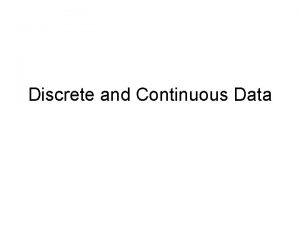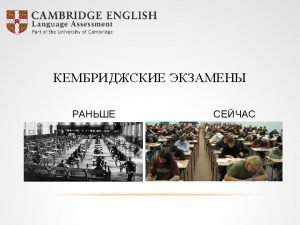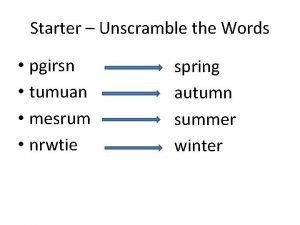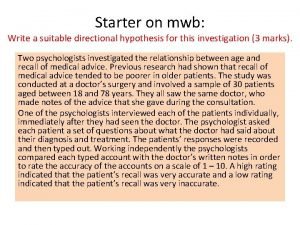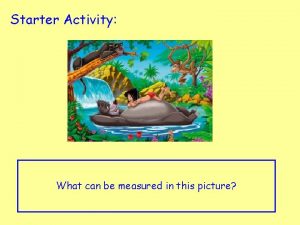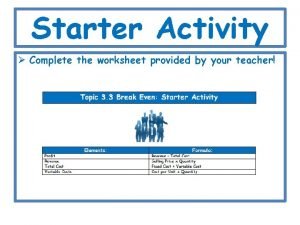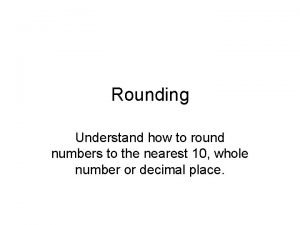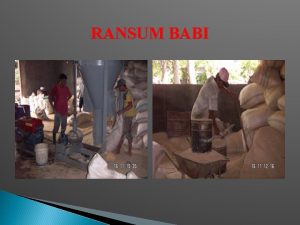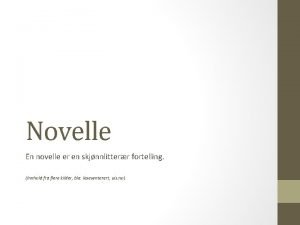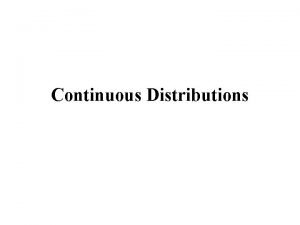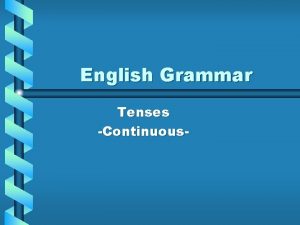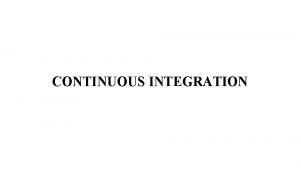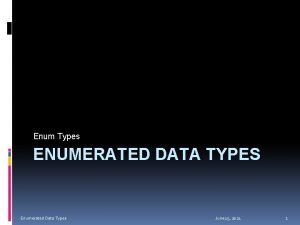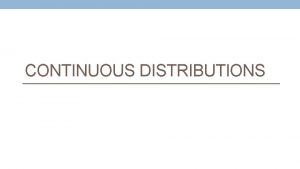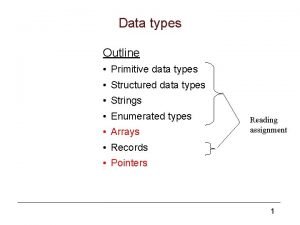Starter List 5 types of continuous data List

















- Slides: 17

Starter • List 5 types of continuous data • List 3 types of discrete data • Find the median of the following numbers: • 2, 3, 6, 5, 7, 7, 3, 1, 2, 5, 4 • Why is the value for the mean calculated from grouped frequency table an estimate?

Grouped Data Time (minutes) 17 -18 18 -19 19 -20 20 -21 21 -22 22 -23 23 -24 Frequency 4 7 8 13 12 9 7 Total = 60

Finding the Mean Time (minutes) Midpoint t Frequency f txf 17 ≤ t < 18 17. 5 4 17. 5 x 4 = 70 18 ≤ t < 19 18. 5 7 18. 5 x 7 = 129. 5 19 ≤ t < 20 19. 5 8 19. 5 x 8 = 156 20 ≤ t < 21 20. 5 13 20. 5 x 13 = 266. 5 60 21 ≤ t < 22 21. 5 12 21. 5 x 12 = 256 = 20. 8 (3 s. f. ) 22 ≤ t < 23 22. 5 9 22. 5 x 9 = 202. 5 23 ≤ t < 24 23. 5 7 23. 5 x 7 = 164. 5 Total = 60 Total = 1247 mean = 1247

Continuous Data that can take any value (within a range) Examples: time, weight, height, etc. You can imagine the class boundaries as fences between a continuous line of possible values 0 2 4 6 8 These classes would be written as: 0≤t<2 2≤t<4 4≤t<6 6≤t<8 8 ≤ t < 10 Each class has: • An upper bound • A lower bound • A class width • A midpoint 10 time (for example)

Discrete Data that can only take certain values Examples: number of people, shoe size. There are only certain values possible. Classes are like a container that hold certain values 0 1 2 3 4 5 6 7 8 These classes would be written as: 0 -1 2 -3 4 -5 6 -7 8 -9 10 - 11 Each class has: • An upper bound • A lower bound • A class width • A midpoint 9 10 11 n, number of people

Cumulative Frequency Time (minutes) Frequency f 17 ≤ t < 18 4 18 ≤ t < 19 7 17 ≤ t < 19 11 19 ≤ t < 20 8 17 ≤ t < 20 19 20 ≤ t < 21 13 17 ≤ t < 21 32 21 ≤ t < 22 12 17 ≤ t < 22 44 22 ≤ t < 23 9 17 ≤ t < 23 53 23 ≤ t < 24 7 17 ≤ t < 24 60 Total = 60

Cumulative Frequency Curve f 60 Time (minutes) Frequency f 17 ≤ t < 18 4 17 ≤ t < 19 11 17 ≤ t < 20 19 17 ≤ t < 21 32 17 ≤ t < 22 44 17 ≤ t < 23 53 17 ≤ t < 24 60 Line is a smooth curve NOT straight lines between each point 50 40 30 20 plot points at the upper limit of each class 10 17 18 19 20 21 22 23 24 t

The Median and the Quartiles The median is the middle value. Another way of thinking about it is to consider at what value exactly half of the samples were smaller and half were bigger. We also look at the quartiles: The lower quartile is the value at which 25% of the samples are smaller and 75% are bigger. If we had 60 runners in a race, it would be the time the 15 th runner finished, 25% were quicker, 75% were slower. The upper quartile is the value at which 75% of the samples are smaller and 25% are bigger. Again, for 60 runners, it would be the time the 45 th person finished. 75% were quicker, 25% were slower. Q 1 is the first quartile, or the lower quartile Q 2 is the second quartile, or the median, m Q 3 is the third quartile, or the upper quartile The interquartile range (IQR) = upper quartile – lower quartile = Q 3 – Q 1 The IQR gives a measure of the spread of the data.

Finding the median Median = m or Q 2 We find the value of t when f = 30 f 60 50 Upper quartile = Q 3 We find the value of t when f = 45 40 30 Lower quartile = Q 1 We find the value of t when f = 15 20 10 17 18 19 Q 1 20 21 Q 2 22 Q 3 23 24 t

Interquartile Range The interquartile range (IQR) = upper quartile – lower quartile = Q 3 – Q 1 The IQR gives a measure of the spread of the data. The data between Q 1 and Q 3 is half of the samples. How packed together are these results? The IQR gives us a measure of this. If the IQR is small, the cumulative frequency curve will be steeper in the middle. This means that more samples are nearer to the mean, If the IQR is large, the cumulative frequency curve will not be so steep in the middle. The samples are more spread out.

Page 320 Exercise 117 Questions 13, 14, 15 & 16

PRINTABLE SLIDES • Slides after this point have no animation.

Cumulative Frequency Time (minutes) Frequency f 17 ≤ t < 18 4 18 ≤ t < 19 7 17 ≤ t < 19 11 19 ≤ t < 20 8 17 ≤ t < 20 19 20 ≤ t < 21 13 17 ≤ t < 21 32 21 ≤ t < 22 12 17 ≤ t < 22 44 22 ≤ t < 23 9 17 ≤ t < 23 53 23 ≤ t < 24 7 17 ≤ t < 24 60 Total = 60

Cumulative Frequency Curve f 60 Time (minutes) Frequency f 17 ≤ t < 18 4 17 ≤ t < 19 11 17 ≤ t < 20 19 17 ≤ t < 21 32 17 ≤ t < 22 44 17 ≤ t < 23 53 17 ≤ t < 24 60 Line is a smooth curve NOT straight lines between each point 50 40 30 20 plot points at the upper limit of each class 10 17 18 19 20 21 22 23 24 t

The Median and the Quartiles The median is the middle value. Another way of thinking about it is to consider at what value exactly half of the samples were smaller and half were bigger. We also look at the quartiles: The lower quartile is the value at which 25% of the samples are smaller and 75% are bigger. If we had 60 runners in a race, it would be the time the 15 th runner finished, 25% were quicker, 75% were slower. The upper quartile is the value at which 75% of the samples are smaller and 25% are bigger. Again, for 60 runners, it would be the time the 45 th person finished. 75% were quicker, 25% were slower. Q 1 is the first quartile, or the lower quartile Q 2 is the second quartile, or the median, m Q 3 is the third quartile, or the upper quartile The interquartile range (IQR) = upper quartile – lower quartile = Q 3 – Q 1 The IQR gives a measure of the spread of the data.

Finding the median Median = m or Q 2 We find the value of t when f = 30 f 60 50 Upper quartile = Q 3 We find the value of t when f = 45 40 30 Lower quartile = Q 1 We find the value of t when f = 15 20 10 17 18 19 Q 1 20 21 Q 2 22 Q 3 23 24 t

Interquartile Range The interquartile range (IQR) = upper quartile – lower quartile = Q 3 – Q 1 The IQR gives a measure of the spread of the data. The data between Q 1 and Q 3 is half of the samples. How packed together are these results? The IQR gives us a measure of this. If the IQR is small, the cumulative frequency curve will be steeper in the middle. This means that more samples are nearer to the mean, If the IQR is large, the cumulative frequency curve will not be so steep in the middle. The samples are more spread out.
 Present progressive with future meaning examples
Present progressive with future meaning examples Past simple future simple present simple
Past simple future simple present simple Continuous data
Continuous data Starters movers flyers ket pet fce cae
Starters movers flyers ket pet fce cae Pictogram starter
Pictogram starter Reichstag fire who was the fire starter
Reichstag fire who was the fire starter Tumuan
Tumuan Directional and non directional hypothesis
Directional and non directional hypothesis Starter background
Starter background Starter activity clipart
Starter activity clipart Starter activity
Starter activity Solving equations starter
Solving equations starter Rounding starter
Rounding starter Romeo and juliet in 10 minutes
Romeo and juliet in 10 minutes Column starter bars
Column starter bars Pakan babi starter
Pakan babi starter Kjennetegn novelle
Kjennetegn novelle Structure of skeletal muscle
Structure of skeletal muscle


